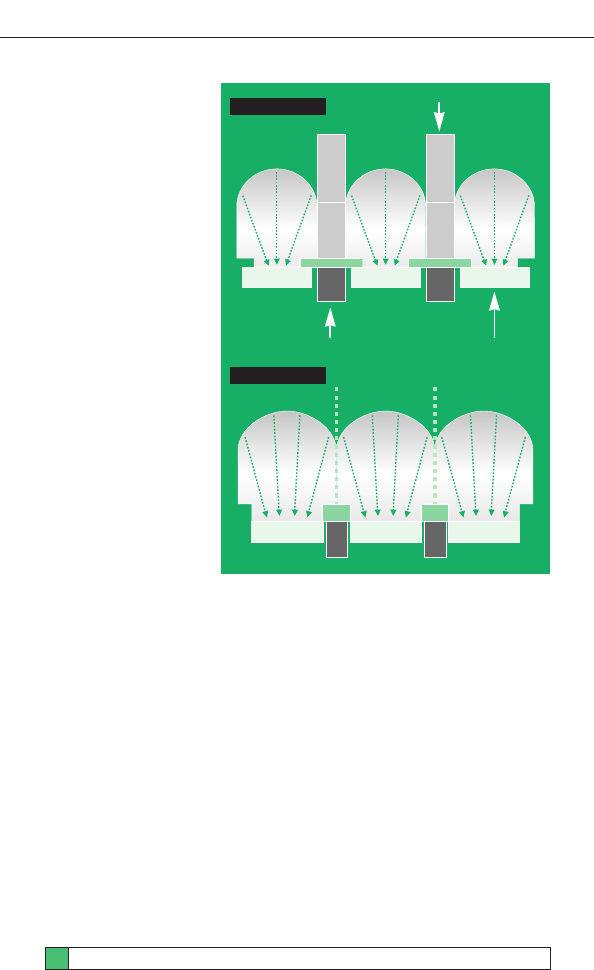
developed a range of
solutions, the most
popular of which include
hybrid cameras that
operate in colour when
lighting is adequate,
switching to monochrome
as darkness falls. Some
cameras operate in low
light by reducing the
number of frames
captured to produce a
brighter picture although
this causes problems
when there is movement
within the image.
Sony has developed a
more radical approach by
improving the sensitivity
of the CCD chip. On Chip
Lens technology (OCL)
increases the surface
area and sensitivity of the
CCD by locating a microlens on each pixel which results in more light being
collected on the photosensitive layer.This technology has been developed most
recently with the introduction of the ExwaveHAD CCD which has a highly advanced
OCL structure. The result of these developments is a degree of sensitivity that can
handle twilight light levels while still producing accurate colour images even with
rapidly moving objects.
Smear is caused by the leakage of light onto the vertical shift register, creating
a vertical bar across the image which can render it useless and is a common
problem with cameras in low light or where there are bright spots in the picture.
With ExwaveHAD, this leakage is reduced because the improvement in the
structure of the CCD minimises the undesirable reflection of light onto its surface.
As a result, smear is reduced to a minimal level of -120dB – comparable to the
frame interline transfer CCDs commonly used in broadcast cameras.
Sony now produces both colour and monochrome cameras which benefit from
the advanced technology of ExwaveHAD technology.
14
The Sony Guide to CCTV
.
Issue 3
Choosing a Camera
Hyper HAD CCD Ineffective area
Transfer register Hole accumulated layer
Exwave HAD CCD


















